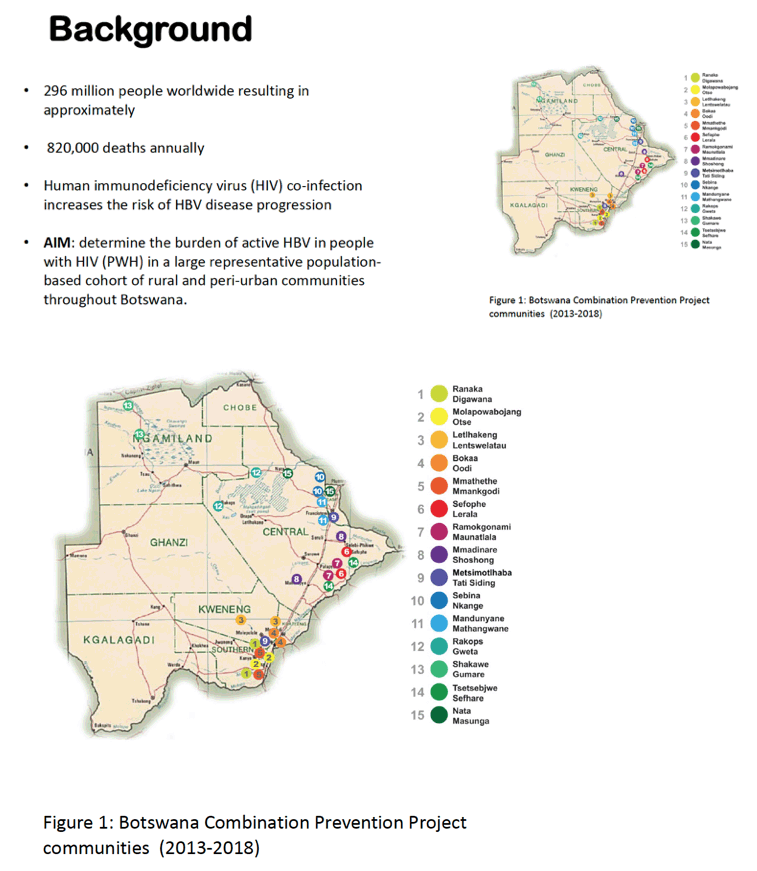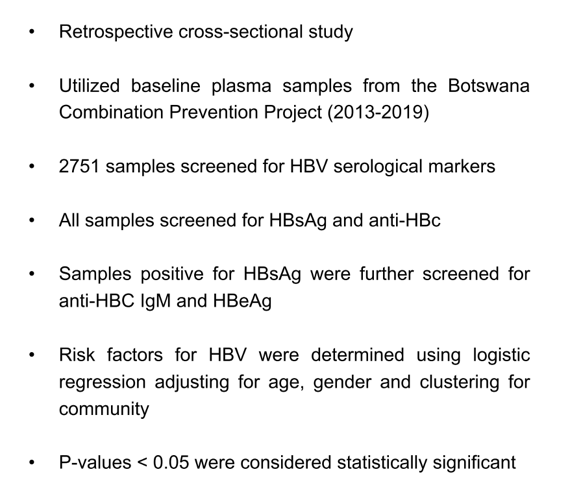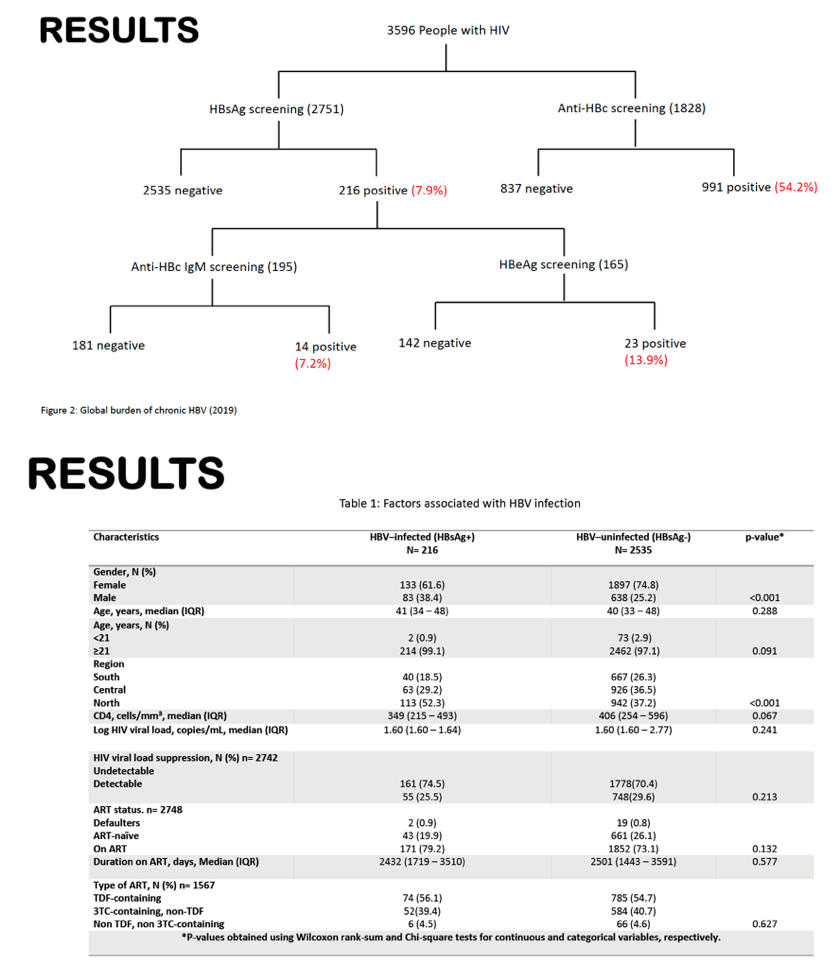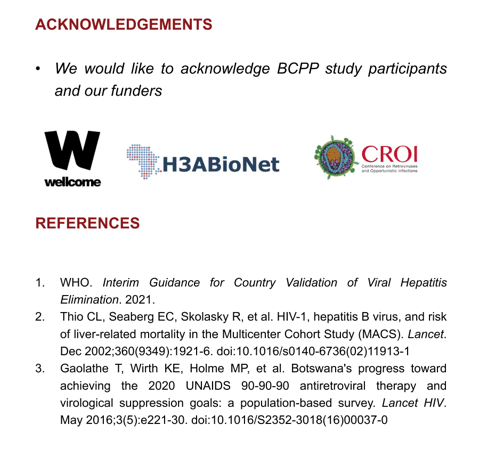 |
 |
 |
| |
Regional Variation in HBV Prevalence in People Living with HIV in Botswana
|
| |
| |
CROI 2022 Feb 11-16
Bonolo Bonita Phinius, MSc
Botswana Harvard AIDS Institue Partnership

program abstract
Background:
Hepatitis B virus (HBV) chronically affects 296 million people worldwide resulting in approximately 820,000 deaths annually. Human immunodeficiency virus (HIV) co-infection increases the risk of HBV disease progression. This study aimed to determine the burden of active HBV in people with HIV (PWH) in a large population-based cohort of rural and peri-urban communities throughout Botswana.
Methods:
Archived entry-visit samples from PWH who participated in the random 20% household survey of the Botswana Prevention Combination Project (2013-2018) in 30 geographically dispersed villages were screened for various HBV serological markers following the manufacturer's protocols. Plasma samples were first screened for HBV surface antigen (HBsAg) and HBV total core antibodies (anti-HBc). HBsAg positive (HBsAg+) samples were further screened for recent infection by HBV core immunoglobulin M antibody (anti-HBc IgM) and for active infection by HBV e antigen (HBeAg). Risk factors for HBV infection we determined using logistic regression adjusting for age, gender, and clustering by community.
Results:
Among 3,596 PWH, a total of 2751 (76.5%) PWH were screened for HBsAg and 7.9% [95%CI: 6.9 - 8.9] were positive. Participants with HBV were more likely to be male (OR=1.85; 95%CI: 1.37-2.50). There was an association between HBV prevalence and region (p <0.001). Participants from the northern region were more likely to be HBV infected compared to the those from the south (OR=1.88; 95%CI:1.15 - 2.99). Exposure to HBV (total anti-HBc) was found in 54.2% [95% CI: 51.9 - 56.5] of 1828 tested participants. Among 195 persons with HBsAg+, recent infections (anti-HBV IgM+) were identified in 7.2% [95%CI: 4.3 - 11.7], and all but 1 were on ART. Approximately 13.9% [13.9%, 95% CI: 9.5 - 20.1] of HBsAg+ participants were HBeAg+, indicating active replication; all but 2 were on ART. Of the 15 HBeAg+ participants with ART data, 7/15 (46.7%) individuals with active replication (HBeAg+) were on either tenofovir disoproxil fumarate (TDF), or lamivudine, 7/15 (46.7%) or both, 14/15 (93.3%).
Conclusion:
HBV prevalence was 7.9% among PWH in Botswana and varied significantly by gender and region. A high proportion of participants were previously exposed to HBV infection, but the majority had cleared the infection at the time of this cross-sectional analysis. Actively replicating virus (HBeAg+) was identified in a small number of individuals despite TDF- and 3TC-containing ART.




|
| |
|
 |
 |
|
|